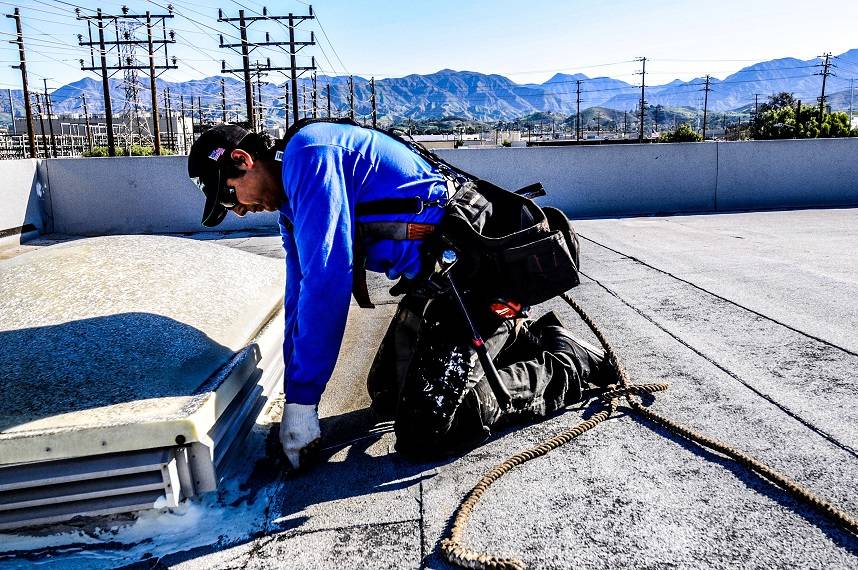Schedule Free Estimate
8 New Pros & Cons About EPDM Roofing
What is EPDM Roofing
EPDM (Ethylene Propylene Diene Monomer) is a type of synthetic rubber roofing membrane that has been gaining popularity over the years for its durability, flexibility, and affordability. EPDM roofs are widely used in commercial and residential buildings due to their ability to withstand harsh weather conditions, such as extreme heat, cold, and high winds.
While EPDM roofing has its advantages, it also has its drawbacks. In this blog, we will discuss the pros and cons of EPDM roofing to help you determine whether it is the right choice for your roofing needs. By the end of this blog, you will have a better understanding of the benefits and limitations of EPDM roofing, and be better equipped to make an informed decision about whether it is the right choice for your building.
Pros:
- Affordability: one of the most affordable flat roofing systems available, making it a popular option for commercial and residential buildings.
- Durability: is highly durable and can withstand various weather conditions, including extreme heat, cold, and heavy rain. It is also resistant to UV rays, which helps to prevent cracking and fading.
- Low maintenance: requires minimal maintenance, making it a cost-effective option over time. It is also resistant to algae and mold growth, which can help to maintain its appearance.
- Long lifespan: has a long lifespan and can last up to 30 years or more with proper maintenance
Cons
- Limited color options: is only available in black, which may not be ideal for those looking for a specific color or aesthetic.
- Prone to punctures: can be prone to punctures and may require additional care when walking on it or performing maintenance.
- Difficult to repair: can be difficult to repair, and it may require specialized equipment and expertise to fix any damage or leaks.
- Environmental concerns: is made from petroleum-based materials and may not be suitable for those looking for a more sustainable roofing option.
Conclusion
In conclusion, EPDM roofing has both advantages and disadvantages, and the decision to use it should be based on a thorough understanding of its features and limitations. The advantages of EPDM roofing include its durability, flexibility, affordability, and ease of installation, while the disadvantages include its susceptibility to punctures, fading, and shrinkage over time.
Ultimately, the choice of roofing material depends on various factors, such as the climate, the building’s design, and the owner’s budget. EPDM roofing can be an excellent choice for buildings in moderate climates with low to medium traffic, but it may not be the best option for buildings in areas with high traffic or extreme weather conditions.
Therefore, it is important to consult with a commercial roofing contractor to evaluate your specific needs and recommend the best roofing solution for your building. By considering all the pros and cons of EPDM roofing, you can make an informed decision that will ensure the long-term protection of your building and its occupants.
Central Roofing Company Headquarters
555 W. 182nd Street
Gardena, CA 90248
310-527-6770

Get A Quote
One of our roofing estimators will gladly meet you to discuss your options and follow up with a free, no-obligation, written estimate.
At Central Roofing Company, we understand that a sturdy and reliable roof is crucial for the success and safety of your commercial property. Our team of highly skilled and trained roofing professionals is committed to delivering exceptional craftsmanship and superior service in every project we undertake.
555 W. 182nd St. Gardena, CA 90248
Ph: 310-527-6770
Our Office Locations:
Our Services
CA license #684960 – Central Roofing, 2024 ©All Rights Reserved | Terms of Use | Privacy Policy | Built by Dymic